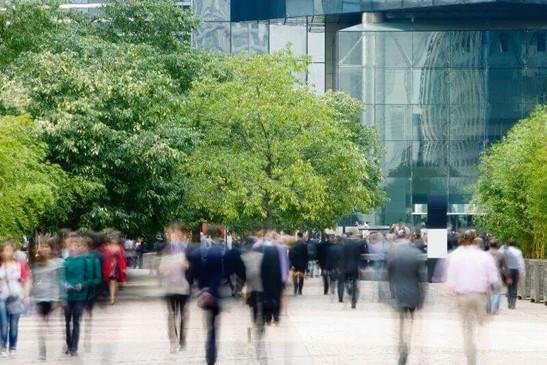Economic Benefits of Working in a City with Walkable Amenities
Mar 04, 2024

Introduction
Choosing an office space near amenities in a walkable city isn't just a lifestyle perk, but a strategic move with significant economic advantages. Walkable cities, where essential services and leisure activities are within walking distance, present a unique set of benefits for businesses, employees, and the local economy. In this article, we will explore the economic benefits of working in such an environment.
Boosting Local Businesses
When employees have easy access to local shops, restaurants, and services, they're more likely to spend their money nearby. This regular foot traffic gives a boost to local businesses, driving sales and encouraging the market for goods and services. It's a symbiotic relationship where businesses grow and, in turn, contribute to the city's economic vitality.
Attracting And Retaining Talent
A walkable office location is a significant draw for potential employees, particularly for the younger workforce who prioritize convenience and quality of life. Cities that offer a vibrant, walkable downtown with office spaces are more likely to attract skilled professionals. This makes it easier for companies to recruit and retain top talent, a key factor in sustaining growth and innovation.
Reduced Transportation Costs
Working in a city with walkable amenities can lead to substantial savings on transportation. Employees can cut down on the costs associated with commuting, such as fuel, parking, and vehicle maintenance. This not only benefits the individual's finances but also reduces the economic strain on public infrastructure, leading to a more sustainable urban environment.
Enhancing Productivity And Health
The link between physical activity and productivity is well known. Walkable environments encourage employees to integrate more movement into their day, whether it's walking to a meeting or stepping out for lunch. This increased activity can lead to better health, reduced healthcare costs, and increased productivity, all of which contribute positively to the business and the overall economy.
Cultivating A Sustainable Economy
Walkable cities support a more sustainable economic model by reducing reliance on vehicles, which in turn lessens traffic congestion and pollution. This contributes to a healthier environment, which is becoming increasingly important to consumers and businesses alike. Sustainability efforts can enhance the city's reputation, attracting eco-conscious businesses and residents and further stimulating economic growth.
Conclusion
The economic benefits of working in a city with walkable amenities are far-reaching, impacting individual employees, businesses, and the broader economy. From boosting local businesses to attracting talent and fostering a sustainable economic model, the advantages of a walkable office location are clear. As we move toward more sustainable and people-focused urban planning, the value of walkable cities is undeniable.
Office Professionals
Urban Office in Houston, San Antonio, and Austin, TX, is redefining the workspace for professionals who are looking for quiet, individualized office settings. By moving away from the traditional coworking models, we provide a calm, welcoming environment enhanced with modern comforts such as podcast rooms and inviting coffee spots. Whether it's for an individual freelancer or a flourishing enterprise, we accommodate a varied clientele, including legal professionals, therapists, and consultants. Our spaces are equipped with a diverse range of facilities from tech-ready conference rooms and phone booths to outdoor working spaces, all aimed at providing an affordable yet luxurious working experience.
If you would like more information about our all-inclusive membership agreements and our affordable, flexible, private office spaces, contact us via our website or give us a call at any of our three locations: in Houston–832-827-3999, in Austin–512-505-0008, in San Antonio–210-435-9515.